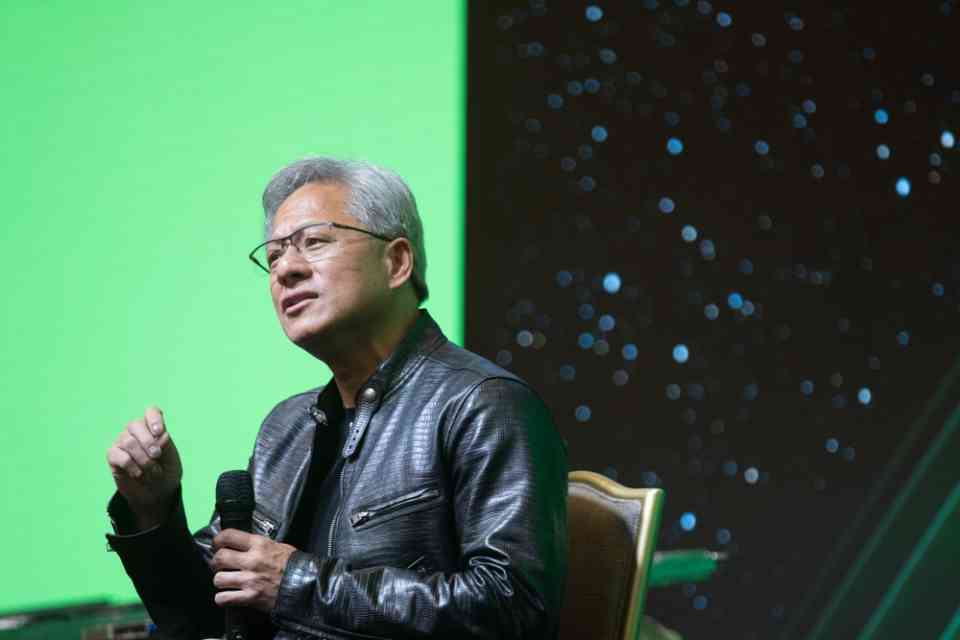Nvidia CEO Highlights Robotics and Automotive as Key Drivers at CES 2025

At CES 2025, Nvidia CEO Jensen Huang presented a groundbreaking keynote that emphasized the company’s push into robotics and automotive technology as pivotal growth areas. Addressing an enthusiastic audience, Huang outlined Nvidia’s vision to extend its influence beyond gaming and artificial intelligence into sectors poised to transform industries worldwide.
Huang unveiled Nvidia’s Cosmos foundation models, designed to produce photo-realistic video through synthetic data. These models aim to significantly lower the cost of training robots and autonomous vehicles, with their availability under an open license expected to democratize access to advanced training data in the robotics and industrial AI sectors. He described the robotics sector as entering a transformative phase, highlighting Nvidia’s AI and GPU platforms as tools that enable machines to perform perception, planning, and action tasks with unparalleled efficiency and precision.
Key technologies like the Isaac robotics platform and Jetson edge AI processors were showcased as integral to advancements in logistics, manufacturing, and healthcare robotics. Huang also spotlighted the company’s automotive innovations, including its DRIVE platform, which has gained significant traction. Partnerships such as Toyota’s adoption of Nvidia’s Orin chips and automotive operating systems for advanced driver-assistance systems further underscored the company’s momentum in the sector.
Huang projected Nvidia’s automotive revenue to reach $5 billion by fiscal 2026, reflecting the growing importance of software-defined vehicles in its strategy. He noted that future cars would function as dynamic software platforms capable of continuous updates and improvements, aligning with the industry’s shift toward connected, intelligent vehicles.
Nvidia’s keynote came amid a surge in its stock performance, which reached a record high of over $620 per share on January 5, 2025. The company’s soaring market capitalization signals strong investor confidence in its diversified growth strategy. Analysts credit the gains to Nvidia’s dominance in AI, gaming, and its expanding footprint in emerging markets like robotics and automotive.
Huang also highlighted how Nvidia’s technologies intersect with consumer electronics, from smart home robotics to connected vehicles, emphasizing the company’s commitment to driving cross-industry innovation. He described Nvidia’s role at the confluence of AI, robotics, and automotive technologies, positioning the company as a leader in shaping future possibilities.
With a clear focus on cutting-edge AI, robotics, and automotive platforms, Nvidia remains at the forefront of industry transformation, capturing the attention of both investors and consumers as it continues to redefine technological frontiers.
Have you read?
The Daunting CEO Agenda: What it Means for Communications.
How to Write Attractive Book Proposals? Jennifer Scott Pens Some Tips.
The Psychology Tool Leaders Can Use to Increase Productivity.
Generative AI Offers Major Benefits for Independent Workers.
7 things I didn’t know about flying business class.
Bring the best of the CEOWORLD magazine's global journalism to audiences in the United States and around the world. - Add CEOWORLD magazine to your Google News feed.
Follow CEOWORLD magazine headlines on: Google News, LinkedIn, Twitter, and Facebook.
Copyright 2025 The CEOWORLD magazine. All rights reserved. This material (and any extract from it) must not be copied, redistributed or placed on any website, without CEOWORLD magazine' prior written consent. For media queries, please contact: info@ceoworld.biz








